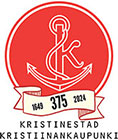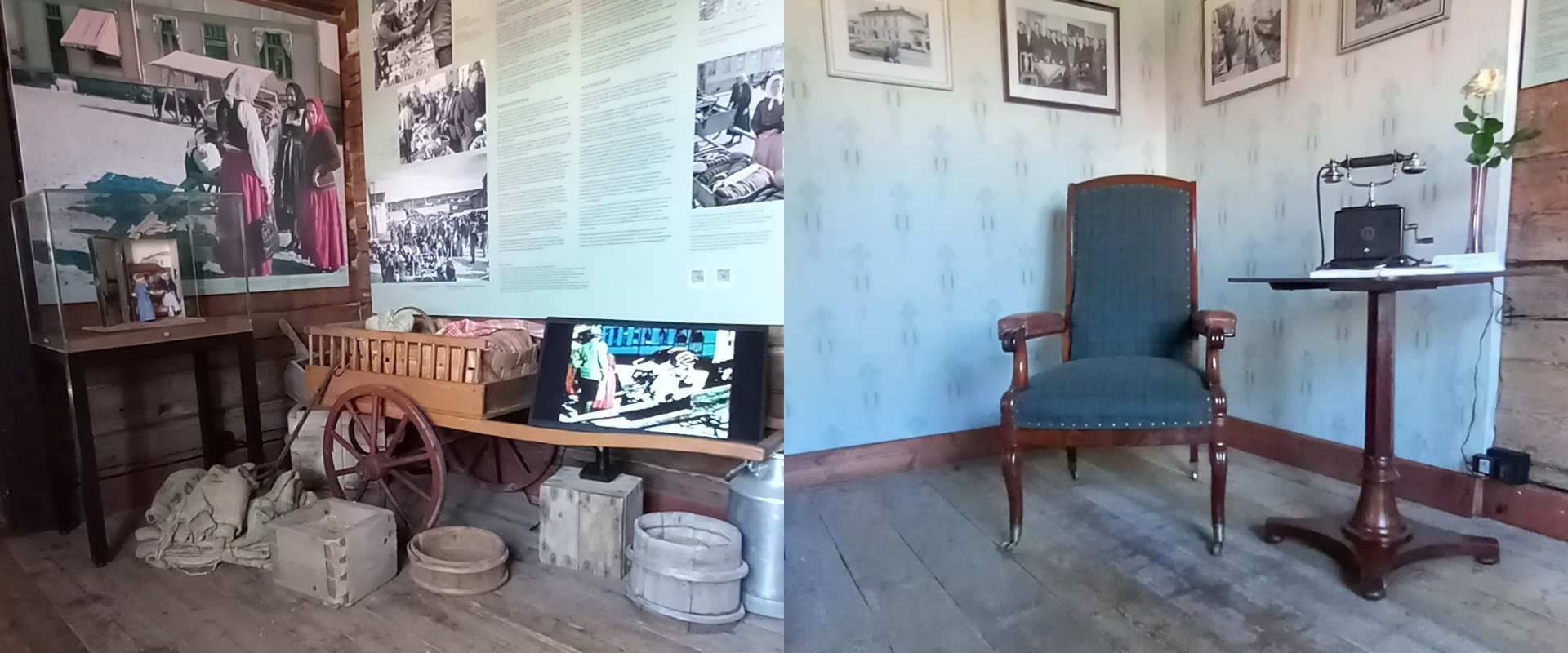Market trade in English
TAR AND TOBACCO FROM THE MARKETPLACE, AMUSEMENTS FROM THE MARKET DAYS
MARKET TRADE
When the land tax entered into force in 1622, trading in rural areas was prohibited, with the exception of market days. Even in towns, only the towns’ own burghers were allowed to trade with the peasants.
A marketplace was built as a trading venue, but its use was never controlled in Kristinestad. Thus, the peasants brought their merchandise directly to the burghers’ houses. The burghers provided their own merchant peasant with lodging for the night as well as food and drink, and often also paid their taxes to the Crown.
The peasants brought, among other things, butter, grain, salted or dried meat and fish, tallow, hides, timber and tar for sale in the town. A specialty of Kristinestad, a round Baltic herring rich in roe, was also an important sales article. Commonly traded merchandise also included beer, spirits, hemp, hops and live cattle.
The peasants bought from the town’s burghers goods which they could not themselves produce, such as salt, iron, fabrics, linen and tobacco. Many of the burghers were shipowners and sold imported goods and trinkets.
At the end of the 18th century, burghers began to set up small shops alongside the market trade. In 1803, there were already six shops in Kristinestad. The shops sold everything under the sun from rye flour to soaps and window glass to asphalt.
MARKET DAYS
Market days provided the only opportunity for burghers from other towns to trade in Kristinestad. It was not until September of 1783 that the first market day was held in Kristinestad. The festivities were “kicked off by a clarinetist accompanied by a drummer.”
In the 19th century, the Candlemas Market on 2 February and St. Michael’s Market on 2 October became the established market days. The St. Thomas Market was also often held on 18 December.
Many of the same goods were sold on market days as in the marketplace, such as flour, forest fowl, fish, tar, hay, potatoes, firewood and birch bark. Peasants and craftsmen also brought brooms, baskets and furniture to the market.
When the land tax was abolished in 1808 and trade was liberalised, the role of the markets changed. Trading began to concentrate on the trinket trade and the ever-expanding horse market. At the same time, amusements, drinking, swindling, pickpocketing, pilfering, speculators, counterfeit money and fights increased. The town's burghers and the magistrate as well as the Governor of Vaasa had enough of it, and in 1857, the Senate banned the holding of markets in Kristinestad at their request. Ten years later, all markets in the coastal area of Ostrobothnia were banned.
The markets in Kristinestad still continued to be held unofficially on the familiar market days. In 1892, there was criticism in the Vaasa newspaper stating that most of the goings-on during the Candlemas Market took place in the town’s eight beer and spirits establishments. “The money earned for a load of firewood or a kilo of butter was spent on spirits, carousels, wax museums and other foolish things.”
In 1907, an attempt was made to curb the commotion by prohibiting the sale of alcohol in all hotels and bars in the town, but this calmed the market frenzy only temporarily. However, the public opinion gradually changed back to allowing markets to be organised. In 1927, on the application of Kristinestad’s town council, the Government again approved the Candlemas and St. Michael’s Markets as official markets.
The St. Michael’s Market is still organised every year at the beginning of October. Today, the Candlemas Market continues as a spring market held in April. In 1969, a summer market organised in July was launched to serve tourism.
Sources:
Sjöblom: Kristinestads historia I, Staden 1915.
Kristinestad och Kaskö 1803, rapport av tullkamrerare Peter Nymansson, Riksarkivet, Stockholm.
Vikstedt Juhani, Kauneista pikkukaupunkikuvista, Teknillinen Aikakauslehti 1.4.1922.
Mäkelä Anneli (ed.), Kristiinankaupungin historia I. Kristiinankaupungin kaupunki 1984.
Norrvik Christer, Stad under Segel – Kristinestads sjöfart efter 1809. Staden Kristinestad 1999.
Newspapers in the digital archives of the National Library of Finland: Helsinfors Tidningar, Kristinestads Tidning, Kristiinan Sanomat, Oulun Wiikko-Sanomia, Pohjalainen, Satakunta, Suomalainen Wirallinen Lehti, Suometar, Suupohjan Kaiku, Syd-Österbotten, Vaasa, Waasan Lehti, Vaasan Sanomat, Åbo Underrättelser.


